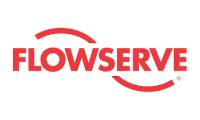Objectify 3D Printing Service FAQ
Our plastic production facility is located in Delhi and our metal plant is in Noida, India. This facility presents industrial 3D printers, post-processing machines, and laser cutters.
We are offering additive manufacturing/3D printing/ Rapid Prototyping services through a technology called SLS (Selective Laser Sintering). A 3D printer uses a digital design and selectively scans the thin layer of powder, sintering together powder particles in the shape of the cross-section of each successive layer of the 3D part. We also offer FDM, DMLS/SLM, LCD/DLP, Polyjet, DLS, SLA, or Binder Jetting 3D printing technologies.
Objectify is India’s largest AMSP (Additive Manufacturing Service Provider) offering the following services:
Rapid prototyping: It is a process of quickly creating prototypes of a physical part or 3D model through additive manufacturing to visualize the design and test the functionality for real-life applications.
On-demand manufacturing: It is also known as Manufacture on demand(MOD). We assist companies to manufacture parts when it is needed and quantities ordered.
Contract manufacturing: We offer a production outsourcing service and partner with you to manufacture parts under your brand at our facility.
Design for Additive manufacturing: Our team of engineers and designers helps you design or optimize your product for 3D printing or additive manufacturing.
Consultation: Our consultation service includes 1) Designing 2) Reverse engineering, 3) Replacement, 4) Material development, and 5) Application simulation to support additive manufacturing.
Educational Content: We create free content about additive manufacturing to help you make the most of 3D printing technology. Visit our Blog, the learning hub, and online webinar to know more.
We follow different finishing processes such as chemical smoothing, polishing, dyeing, painting, color resistance, and plating depending on the part and its chemical make-up. We apply the best suitable finishing method to meet or beat our customer’s requirements.
Check out our entire 3D printing material catalog. You will find 50+ combinations of materials and finishes available on our website. For 3D printing, we offer plastics, resins, and metals. For more information about our materials and finishes, our sales department will be happy to answer all your questions.
Please email us at marketing@objectify.co.in
To obtain optimal resolution in 3D printing, it is vital to thoroughly check the 3D model before you upload it for printing. In Additive Manufacturing, the layer thickness is important for better resolution but this is not the only factor you should consider while designing 3D parts. The layer thickness of certain materials can be just 28 µm but such a thin layer might not be solid enough to give the required strength to the part. Therefore, it is crucial to check the minimum details and engraving restrictions depending on the material and the technology used for 3D printing. Following is quick information about the printing process and ideal layer thickness.
Technology | Layer Thickness |
Selective Laser Sintering | 100- 150 µm |
Multi Jet Fusion | 80 µm |
PolyJet | 28 µm |
DLS / LCD / DLP | 100 µm |
SLA | 100 µm |
SLM | 150 µm |
DMLS | 30 – 40 µm |
Binder Jetting | 100 µm |
Casting | 25 µm |
Yes, we do 3D print PLA plastic materials. It is printed using FDM 3D printers and is mainly used to manufacture significant parts up to 1x1x1m.
However, we do not offer ABS plastic material. If you are looking for plastic parts, check our 3D printed plastic materials using SLS (Selective Laser Sintering) technology, providing consistent and high-quality results, allowing intricate and complex geometries for fabrication.
All of our 3D printing materials can be used for such features. When the embossed or hollowed-out section is an essential part of your design, we recommend making it as deep or exaggerated as possible. To ensure better powder removal (thus better detail visibility), the width of any grooves or embossed features should be no smaller than the depth or height of the part.
Yes, with a bit of preparation, you can paint or polish 3D printed parts yourself as perfectly as an expert.
We can certainly help you here as now we are offering metal printing on the EOS M280.
You send us the design file, we will review it and send you the quote. You just need to specify the material such as titanium, aluminum, or stainless steel and we will start the work. For specific requests in terms of materials and finishes, you can always contact us, and our expert team will assess your project and confirm the feasibility.
Our Clients






















1 Million +
Parts Built
25+ Parts
Built Every Hour
ISRO | DRO | MRO
Collaborations
